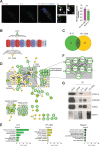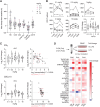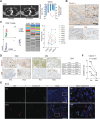Systemic Blockade of Clever-1 Elicits Lymphocyte Activation Alongside Checkpoint Molecule Downregulation in Patients with Solid Tumors: Results from a Phase I/II Clinical Trial
- PMID: 34078651
- PMCID: PMC9401456
- DOI: 10.1158/1078-0432.CCR-20-4862
Systemic Blockade of Clever-1 Elicits Lymphocyte Activation Alongside Checkpoint Molecule Downregulation in Patients with Solid Tumors: Results from a Phase I/II Clinical Trial
Abstract
Purpose: Macrophages are critical in driving an immunosuppressive tumor microenvironment that counteracts the efficacy of T-cell-targeting therapies. Thus, agents able to reprogram macrophages toward a proinflammatory state hold promise as novel immunotherapies for solid cancers. Inhibition of the macrophage scavenger receptor Clever-1 has shown benefit in inducing CD8+ T-cell-mediated antitumor responses in mouse models of cancer, which supports the clinical development of Clever-1-targeting antibodies for cancer treatment.
Patients and methods: In this study, we analyzed the mode of action of a humanized IgG4 anti-Clever-1 antibody, FP-1305 (bexmarilimab), both in vitro and in patients with heavily pretreated metastatic cancer (n = 30) participating in part 1 (dose-finding) of a phase I/II open-label trial (NCT03733990). We studied the Clever-1 interactome in primary human macrophages in antibody pull-down assays and utilized mass cytometry, RNA sequencing, and cytokine profiling to evaluate FP-1305-induced systemic immune activation in patients with cancer.
Results: Our pull-down assays and functional studies indicated that FP-1305 impaired multiprotein vacuolar ATPase-mediated endosomal acidification and improved the ability of macrophages to activate CD8+ T-cells. In patients with cancer, FP-1305 administration led to suppression of nuclear lipid signaling pathways and a proinflammatory phenotypic switch in blood monocytes. These effects were accompanied by a significant increase and activation of peripheral T-cells with indications of antitumor responses in some patients.
Conclusions: Our results reveal a nonredundant role played by the receptor Clever-1 in suppressing adaptive immune cells in humans. We provide evidence that targeting macrophage scavenging activity can promote an immune switch, potentially leading to intratumoral proinflammatory responses in patients with metastatic cancer.
©2021 The Authors; Published by the American Association for Cancer Research.
Figures






References
-
- Cassetta L, Pollard JW. Targeting macrophages: therapeutic approaches in cancer.Nat Rev Drug Discov 2018;17:887–904. - PubMed
-
- Palani S, Elima K, Ekholm E, Jalkanen S, Salmi M. Monocyte stabilin-1 suppresses the activation of Th1 lymphocytes.J Immunol 2016;196:115–23. - PubMed
-
- Hollmén M, Figueiredo CR, Jalkanen S. New tools to prevent cancer growth and spread: a ‘Clever’ approach.Br J Cancer 2020;123:501–9. - PMC - PubMed
Publication types
MeSH terms
Substances
Associated data
Grants and funding
LinkOut - more resources
Full Text Sources
Other Literature Sources
Medical
Molecular Biology Databases
Research Materials

